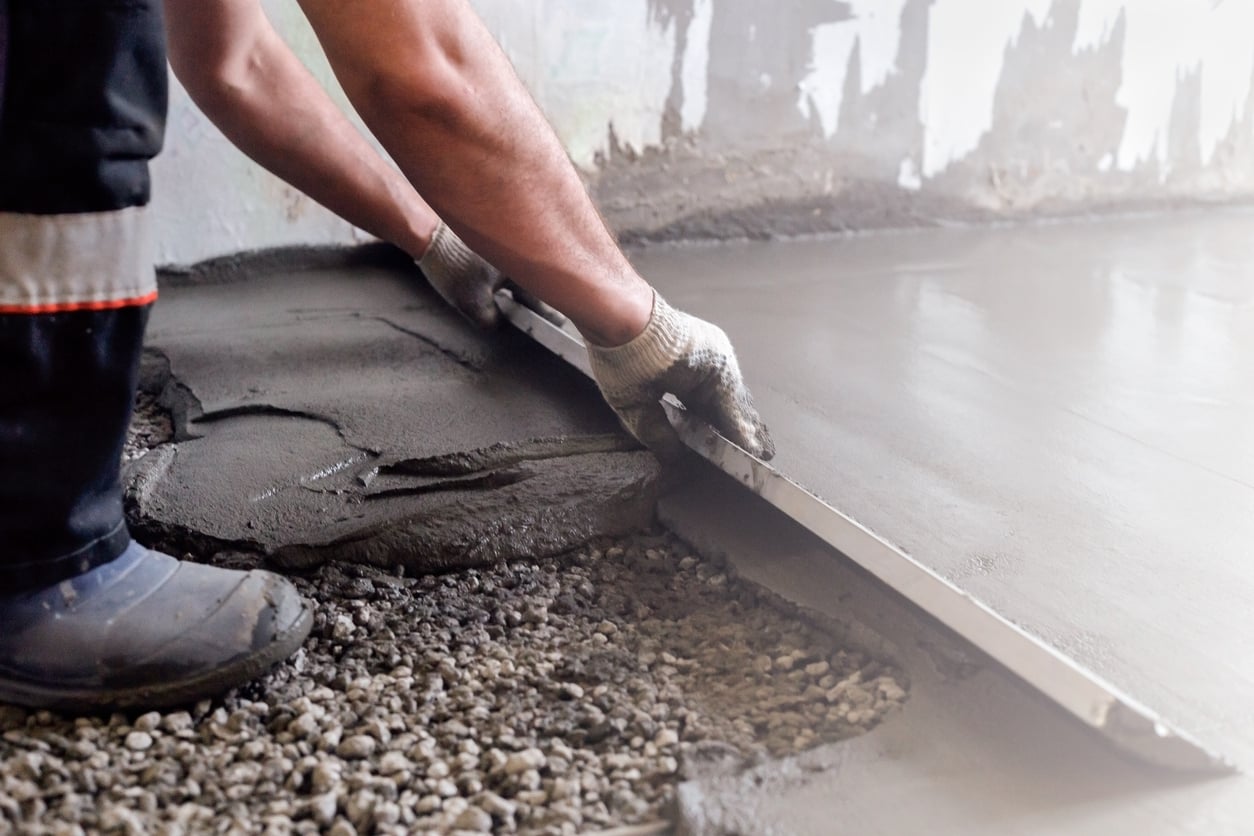Achieving a beautifully smooth finish when pouring your own concrete can be harder than it looks. These tips and tricks will not only leave you with aesthetically pleasing and even concrete, but will also ensure its durability and a long-lasting surface.
Make Sure You Have the Right Tools
Having a proper set of tools will set you up for success from the outset. However, you should note that many of these tools won’t just be lying around in your shed already. You’ll most likely have to source them specifically. It’s imperative that you have these tools before you start your project so you don’t get halfway through before realising and then ending up with an uneven surface.
You’ll need:
- A wood or magnesium float
- An edger
- A grooving tool
- A steel trowel
- A bull float
Many of these tools you’ll be able to buy at a hardware store or you can rent some of the bigger and more expensive tools.
Choose the Right Concrete
Make sure that you take into consideration your specific circumstances and needs when choosing your concrete. For example, some concretes are better suited to extreme temperatures and some can handle more weight than others.
It’s also extremely important that you mix the concrete precisely and in accordance with the instructions. This way you’ll get much better results than if you are measuring by eye or estimating.
Use a Hand Float
A hand float is the go-to tool for the initial smoothing and compacting of the surface. Hand floats are available in a range of materials (and at price points) for different effects:
- Magnesium floats are lightweight and help to open up the pores of the concrete to allow evaporation
- Aluminium floats provide a similar finish to magnesium floats but are a little heavier and more difficult to handle if you are not used to it
- Wooden floats create a rough surface that’s ideal for very stiff concrete. They are cheap but wear out quickly
- Laminated-canvas resin floats provide a similar finish to wooden floats and last longer but are more expensive
Know When to Trowel and How Long For
One of the most common mistakes that beginners make when trowelling concrete is not knowing when to do it or how long for. This can lead to the integrity of the concrete being compromised as the surface can be weakened, small cracks can form, and the surface may become white and dusty.
Smooth the surface with a wooden trowel or magnesium float. This should only take a few minutes. If you want a really smooth finish, you can repeat this process two or three times, allowing the concrete to set a bit each time. Make sure that you are taking the weather into consideration during this step, as concrete sets quicker on warmer days.
Consider a Broom Finish
If you want a finish with more grip (as opposed to an extremely smooth finish which may become dangerous when wet), consider a broom finish. This can be achieved by dragging a broom over the partially hardened concrete – always pulling the broom and never pushing it. You can adjust your pressure to achieve the desired amount of texture.
While you can buy special concrete brooms for this, a regular broom will also do the trick. Use a bucket of water to dip the broom in and shake off excess, but be careful to not shake the water onto the concrete.
Curing the Concrete
The process of curing the concrete ensures that your freshly laid concrete doesn’t crack and will also be durable in the long run.
The simplest way to cure concrete is to lightly spray it with a hose, cover it with plastic or a wet cloth (making sure to not let the material dry out) and weigh down the edges with heavy objects. Again, it is important to take note of the weather at this stage as hot, dry and windy weather will mean that water will have to be reapplied more regularly.
Sealing the Concrete
After curing the concrete (a process which should take at least a month), sealing the concrete will make it water-resistant and easier to clean.
Using a concrete sealant, make sure the concrete is clean and dry before you begin. Apply the sealant thinly to avoid puddles and make sure to follow the instructions of the sealant. Make sure the sealant has dried completely before walking over or placing anything on the concrete.
Concreting can be a daunting and difficult task so if you feel that you need any help, Everlast Services are an affordable and reliable option. It can take a lot of practice to get good at concreting and, with a reputation that we’ve built up over the past 20 years, we certainly have it.
Contact Everlast Services Today
- Call us on 03 9369 2066
- Email us at sales@everlastservices.com.au
- Complete our quick and easy quote request form
- Visit our showroom at 443 Old Geelong Road, Hoppers Crossing. We’re open:
- Monday to Friday: 8:30am – 5:00pm
- Saturday: 9:00am – 1:00pm
- Sunday: Closed





